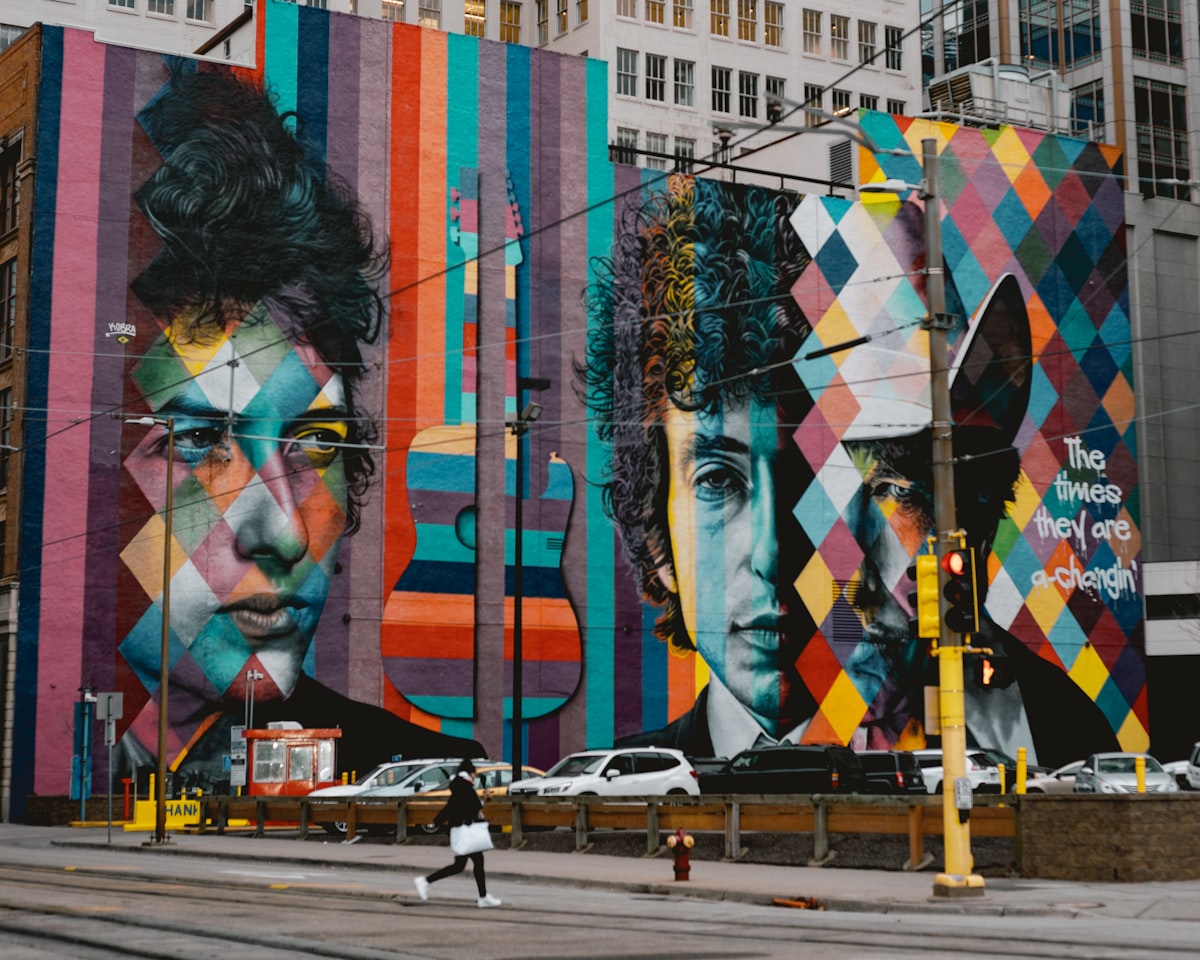Someday Blues Unlocked
In the summer of 2005, I had the privilege of working on a commercial with the legendary Bob Dylan. He was promoting his upcoming album "Modern Times" which would be released on iTunes, with the first single being the catchy tune "Someday Baby".

In the summer of 2005, I had the privilege of working on a commercial with the legendary Bob Dylan. He was promoting his upcoming album "Modern Times" which would be released on iTunes, with the first single being the catchy tune "Someday Baby". As an Apple fan, I was excited about the project, even though I hadn't extensively explored Dylan's vast musical catalog at that point.
Growing up in the 80s, my musical tastes were primarily shaped by hair band rock, followed by country in the 90s, and then a shift towards pop with occasional forays into 80s rock nostalgia. It wasn't until last year (2023) that I revisited "Someday Baby" and truly appreciated its infectious melody and the personal connection it held for me.
Discovering the Blues Roots
One day, when I asked Siri to play "Someday Baby," she unexpectedly played the version by R.L. Burnside instead of Dylan's. Initially caught off guard, I decided to give it a listen, and that's when my musical journey took an unexpected turn. Burnside's "Someday Baby" shared a lyrical line with Dylan's version, hinting at a possible influence or inspiration.
Intrigued, I delved deeper into Burnside's discography, enjoying tracks like "Don't Care How Long You're Gone," which Dylan seemed to have drawn inspiration from for the chorus and instrumental sections of his "Someday Baby." The guitar riff in Dylan's version, however, appeared to be directly lifted from R.L. Burnside & The Sound Machine's "Goin' Away, Baby."
A Century of Musical Inspiration
As I delved deeper into the lineage of "Someday Baby," I discovered that even the influential R.L. Burnside had drawn inspiration from an earlier blues classic – "Someday Baby Blues" by Sleepy John Estes, recorded in 1935.
Estes' seminal track laid the foundation for the subsequent versions, with its haunting lyrics and distinctive blues progressions. Burnside's renditions, such as "Don't Care How Long You're Gone" and "Goin' Away, Baby," paid homage to Estes' original work, borrowing lyrical lines and instrumental elements.
The legacy of "Someday Baby Blues" didn't stop there. Muddy Waters, the iconic figure in the blues genre, also embraced the allure of "Someday Baby Blues" and crafted his own rendition, titled "Trouble No More." With his distinct style and soulful delivery, Waters added his own unique flavor to the song. The Allman Brothers Band later offered their own interpretation, introducing the classic to a new generation of rock fans.
In 2000, the North Mississippi Allstars breathed fresh life into the song with their modern take on "Someday Baby," significantly altering the lyrics while still paying reverence to the original inspirations. This continuous cycle of reinterpretation and reinvention is a testament to the enduring power of the blues and its ability to transcend generations.
Bob Dylan's "Someday Baby" stands as a masterful amalgamation of these various influences, seamlessly weaving together elements from Estes, Burnside, and others into a timeless composition. It's a remarkable example of how great artists can draw from the well of musical history, paying homage to their predecessors while creating something entirely new and captivating.
Continuing MY Musical Journey
Through this journey, I've uncovered a rich tapestry of musical influences, with Dylan serving as a conduit for introducing me to other great artists like Burnside and Estes. It's a testament to the enduring power of music and how it can transcend generations, inspiring and influencing artists across different eras and genres.
My newfound appreciation for the blues has opened up a whole new realm of musical exploration. Perhaps this experience will mark the beginning of a more diverse and expansive musical palette, as I continue to uncover the roots and inspirations behind the songs I love.

